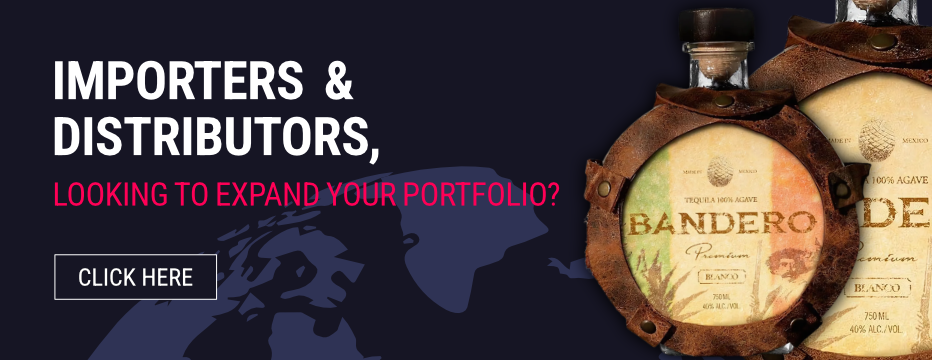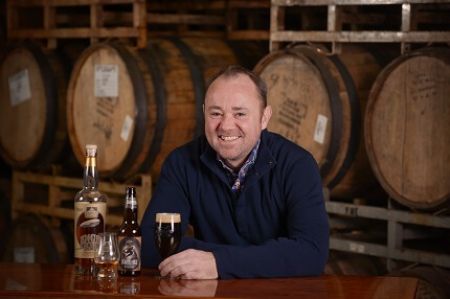Sommeliers Choice Awards 2024 Winners
Scotland’s Gin Tale: Martin Reid’s Journey with The Gin Cooperative
Martin Reid on challenges, collaboration, and a thriving Scottish Gin scene.

When Martin and Natalie Reid founded The Gin Cooperative in 2017, they embarked on a mission to elevate Scotland’s gin producers onto the global stage. But the road to recognition wasn't without its hurdles. From gaining the trust of skeptical gin makers to navigating an already buzzing industry, Reid's journey mirrors the resilience and passion that define Scottish Gin itself. In this conversation, Reid reflects on the key challenges of establishing The Gin Cooperative and how its focus on storytelling, collaboration, and authenticity helped transform the perception of Scottish Gin.
In your early days of building The Gin Cooperative, what were some unexpected challenges you faced when working with gin makers and producers across Scotland?
The big issue we faced was gaining the confidence and trust of brand owners and producers. Some brands needed clarification and help to understand what The Gin Cooperative was about and who the people behind the business were. Because we were not from the drinks industry, there was some suspicion about our motivations for establishing a membership-based business and website that would be the go-to online resource for Scottish Gin.
Over time, as we managed to get out on the road, visit distilleries, and speak face-to-face with brand owners, they got us as people and understood that what we were trying to do was genuine and for the benefit of the Scottish Gin category. We would eventually have a membership of over 100 Scottish Gin brands ranging from small producers making a few hundred bottles yearly to big globally recognised brands. Still, everyone paid the same membership fee and got the same benefits. One of the things we prided ourselves on was that every member and Scottish Gin brand were treated as equals and peers.
We also faced challenges from other organisations and individuals already in talking about Scottish Gin, which we saw as more of a disappointment than a challenge. We were naive, thinking that the more businesses, organisations, societies, and groups promoting Scottish Gin, the better. We saw the very few existing and often recently established businesses talking about Scottish Gin as peers and believed working in a spirit of collaboration could be a good thing for us and others, but collectively for the wider Scottish Gin category.
The Gin Cooperative launched in 2017 as a membership-based business where the brands who signed up were provided various members-only benefits. An upgraded profile in our A-Z of Scottish Gins, an invitation to take part in editorial features, we would shoot a lot of high photography and allow the brands to use these images in their printed and digital marketing materials, visit their distilleries and shoot video content and more. The focus for us as long-time gin drinkers from Scotland, both with careers in design, marketing, and business, was to build a website, digital channels, and brand that would showcase the world of Scottish Gin to consumers and industry, helping share and tell the story of Scottish Gin in a way that had never been done before. We also wanted to open the business to creative collaborations with others, including the growing online gin community of gin bloggers, food and drink journalists, and others we saw who had a genuine passion for Scottish Gin.
Since then, we launched International Scottish Gin Day (ISGD) in 2018, with the first ISGD in 2019. In 2020, we launched our online shop for Scottish Gin, which evolved into ScottishGin.com in 2022. In 2022, we realised one of our long-term goals and dropped our membership fee so The Gin Cooperative could help support all the Scottish Gin brands based in Scotland. We also launched our awards programme for Scottish Gin, The Gin Cooperative Awards, which is now in its third year.

Image: Throwback to International Scottish Gin Day 2019; Source: International Scottish Gin Day.
What do you believe sets Scottish Gin apart from other gin categories around the world? Is it purely the local botanicals, or do you think there’s something deeper in the culture that influences its distinctiveness?
In terms of what makes Scottish Gin unique, for one, the water used in the production of Scottish Gin is among some of the best in the world; however, I don't think that is the first thing people think of when they see a Scottish Gin. Most brands make excellent use of their local history and folklore as part of their brand or their Scottish Gins, so that can carry a sense of mystery, romance, and heritage, and tie a brand to a particular region. Every Scottish Gin brand has a story, and many of Scotland's Gin brands and producers know how to tell their stories well. Due to our geographical size, producers can produce their gins and focus on their region while still under the banner of being a Scottish Gin, so there are often a few layers of stories and connections behind every Scottish Gin.
Many Scottish Gins also feature a selection of locally foraged or grown botanicals to inject a Scottish element. Thanks to the Scottish climate, there are many unique botanicals from the coastline to heather-covered hillsides. Still, we will never be able to grow any tropical fruits or citrus on the scale needed for gin production, so many producers, like most do, buy in various commercially grown botanicals. For us, the alcohol is the blank canvas, and the botanicals are the paint. The key to a memorable Scottish Gin in terms of aroma and flavour is how the producer uses the paints and what the final painting looks like.
The term Scottish carries a lot of benefits in terms of food and drink. We produce some of the world's best-known and sought-after food and beverages, from our salmon and beef to Scotland's famous spirit, whisky. The heritage and reputation of Scotland as a country that has a rich and long history of distillation has been beneficial for the growth of Scottish Gin, and the skill and care we've seen firsthand that goes into making Scottish Gin means that Scottish gin is more than comfortable in Scotland's portfolio of food and drink.
Scotland is also home to Herriot Watt University, which has been providing training in brewing and distilling in some shape or form since 1903 before the dedicated International Centre for Brewing and Distilling (ICBD) was opened in 1989. The ICBD offers a range of degrees in brewing and distilling, covering the processes and the science in great detail. We've seen many distillers enter the Scottish Gin industry after graduating from the ICBD and going on to create brilliant Scottish Gins and other Scottish spirits, including vodka, rum, whisky, and more. You could compare the ICBD to almost a feeder school for the Scottish spirits industry and the broader global spirits industry, training the distillers of tomorrow and refining the science and art of producing excellent quality spirits and beverages.
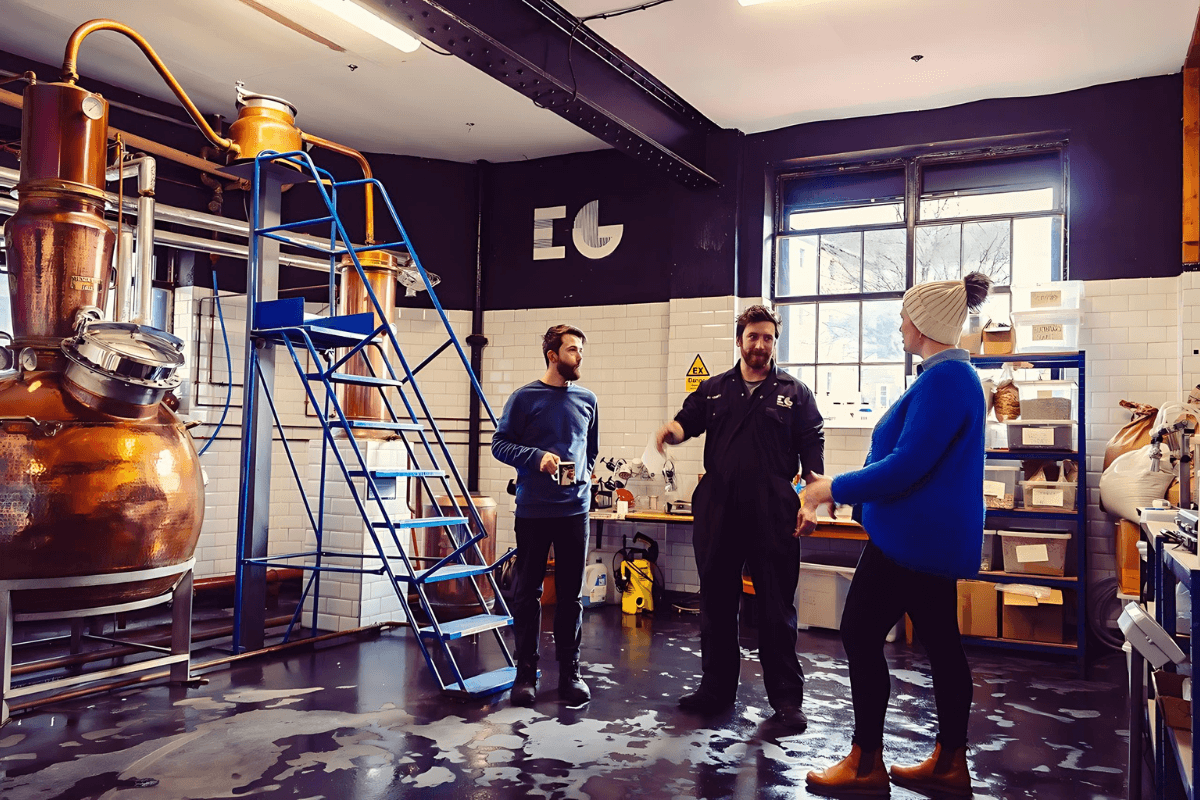
Image: Natalie Reid behind the scenes at Edinburgh Gin Distillery. Pic: ©The Gin Cooperative
With over 5,500 gins globally, what do you believe is the key to helping Scottish Gin stand out in an increasingly crowded market?
It's a big question to answer, and several factors come into play. Knowing who you are as a business, what it represents, what makes it unique, and who your customers are is critical, business 101. How can you tell your story if you don't know who you are as a business or your target customers?
Your brand should tell the viewer who you are, what you do, and how you do it. Are you a gin, spirits, or distillery brand? Most Scottish Gin, spirit, and distillery brands have a strong sense of who they are, what they do, and how they do it, and this is reflected in strong brand identities, creative marketing content, and consistent packaging across their portfolio of spirits.
A great example of a Scottish Gin brand that recently rebranded is Isle of Skye Distillers, a distillery on the Isle of Skye, and its Misty Isle range of Scottish Gins. Their new brand doesn't stray too far from their original brand identity, but with a new bespoke bottle and new labels, their packaging is eye-catching and tells a strong who, what, and how story. So don't be afraid to evolve, and if something isn't working for your brand, don't view it as a failure but an opportunity to learn and develop.
Scottish Gin brands and producers must establish themselves in the UK first to build brand recognition and grow sales through working with on-trade and off-trade. With solid sales data and brand loyalty, they can demonstrate that there is room for potential growth. It can help secure investment and provide solid data for export opportunities into new countries. An importer will often only take a large volume order if there is some reliable and genuine business data to back up that your product is selling and there is valid growth.
Scottish Gin brands must see the on and off-trade as a valued part of their business strategy rather than just a means for sales or competition for their own sales. Scottish Gin brands have a unique opportunity to work directly with their on and off-trade partners, so that might include setting up workshops to make sure on-trade staff know how to serve your Scottish Gins or might be an in-store meet-the-maker event with some of your off-trade partners. We've found that if your on-trade and off-trade partners feel invested in your brand, know how to serve it, or know the back story, they can be excellent brand ambassadors for your brand and products.
It's also a numbers game in terms of RRP and trade RRP. If your product looks premium, is marketed well, and has a price that allows for some margin for your partners, provides a valid commercial reason for a bar or shop to stock your products. Suppose there's minimal margin for your on-trade and off-trade partners. In that case, your brand will permanently lose out to another brand prepared to make its price structure work for everyone in the supply chain. In that case, you might get by with online sales and attending consumer events, but it will prove a massive barrier to real growth and may cause your brand to stagnate. Making slightly less per case sold but enabling you to shift larger volumes, in the long run, is a strategy that has led to much growth for many Scottish Gin brands and producers. There will always be a balance to strike when it comes to margins, and it's up to each business owner to weigh the pros and cons.
Finally, if your product looks like your neighbour's son designed the label because he has a copy of Photoshop, you're not serious about your brand. If you're not serious about your brand, why should a bar, shop, or consumer buy your product? Invest the time and money working with a reputable design agency or a recommended freelance designer who can get to know your vision for your brand, products, and business, help you develop your branding and packaging, and guide you through the complex world of branding and marketing.

Image: (L-R) Isle of Skye Distillers Misty Isle Salty & Sweet Gin and serve. Pic: ©The Gin Cooperative and Isle of Harris Gin and serve. Pic: ©The Gin Cooperative
Can you share an example of a Scottish gin maker whose story particularly resonated with you and inspired the way you present Scottish Gin to your audience?
We always set out to make The Gin Cooperative a content-rich and engaging resource for Scottish Gin, with a wide range of editorial features about the Scottish Gin category and shooting original photography to go with our editorial features and content. One of the many things that interested us about the Scottish Gin category was the stories behind the bottles.
There are many Scottish Gin brands with brilliant stories to tell, but a few that resonated and caught our attention were Hendrick's Gin, The Botanist, Beinn a Tuirc Distillers, Caorrun, Isle of Harris Gin, Rock Rose Gin, Misty Isle Gin, Makar Glasgow Gin, Edinburgh Gin, Electric Spirit Company, City of Aberdeen Distillery, Lost Loch Spirits, Raven Spirits, Little Brown Dog Spirits, and Gin Bothy.
In particular, Hendrick's Gin will always be unique for us. When we first tried it many moons ago and saw it came with a cucumber garnish, the bottle looked like something from a Victorian chemist; the whole package and brand just said, 'Look at me, drink me'. The story behind the brand, the distillery, the gin stills, and more has an air of unexpected adventure about it with a healthy twist of the unexpected. When you consider it's what we could call the first Scottish Gin created in 1999, released in the US in 2000 and the UK in 2003, it's a gin and brand that, in the grand scheme of things, hasn't changed if at all over the decades and yet it can be found behind the back bars of millions of venues around the world. Caorunn Scottish Gin in 2009 and The Botanist Islay Dry Gin in 2010 were two other brands that used unique distillation equipment and unique stories that made us sit up and pay attention.
In terms of the last decade, Isle of Harris Gin, with its bespoke aqua blue bottle, has a community ethos of regenerating an island community by creating jobs and new industries on the Isle of Harris and doing its best to put the community at the heart of what it does is an amazing example of the power of Scottish Gin and the benefits it can generate. The team at Isle of Harris Distillers has made sure that the island's rich heritage, its people, the landscape, and the folklore are all intertwined in the brand. Isle of Harris Gin, so it's a fantastic example of excellent packaging, great branding, and a great story told with passion and care.
There are many great Scottish Gin brands, and that's part of what makes the Scottish Gin industry special. No two brands are the same, and no two brands tell the same story.
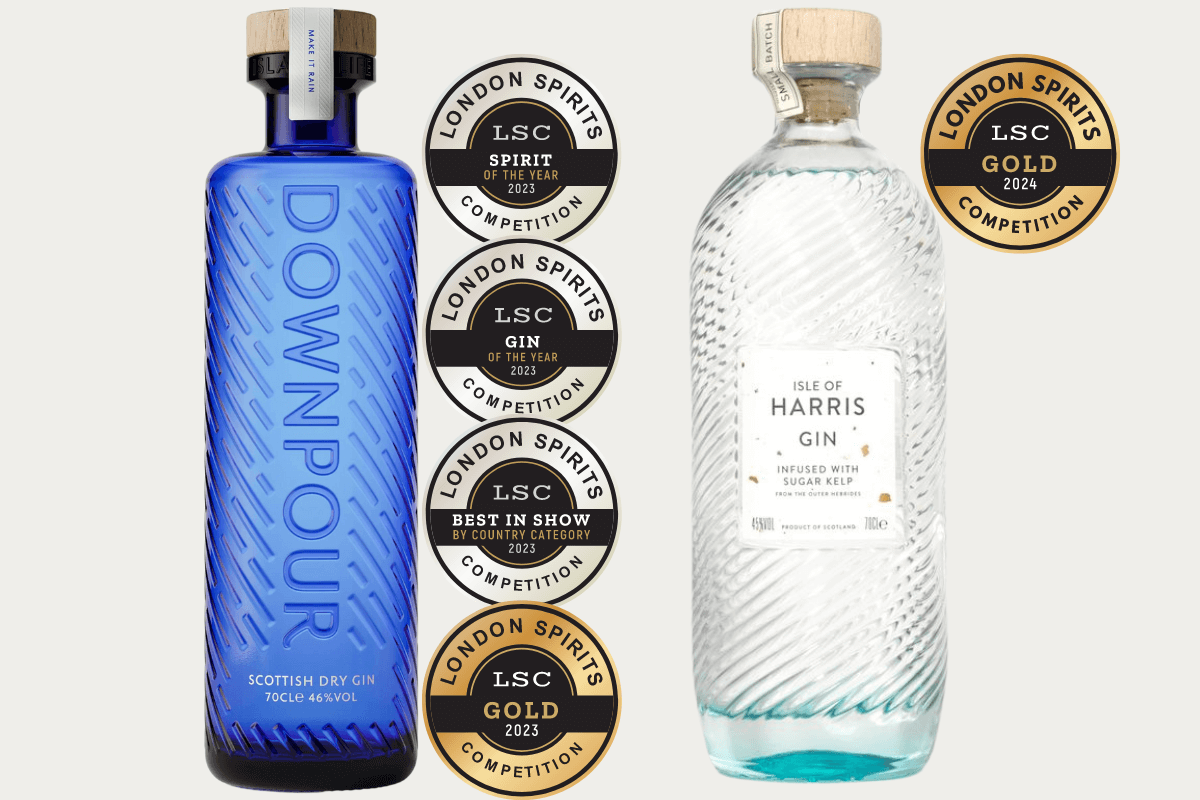
Image: 2023 & 2024 London Spirits Competition Winners: (L-R) Downpour Scottish Dry Gin & Isle of Harris Gin
How do you balance educational content for gin enthusiasts with commercial content that helps generate opportunities for Scottish Gin makers?
One of the key remits is that we retain complete editorial control over all our content. So, for example, in an interview, a gin maker might state their Scottish Gin is the best Scottish Gin in Scotland, bar none. They might believe that, but how that comes across to the reader and their peers in the Scottish Gin category screams arrogance. Our editorial features always try to capture the brand's essence, who the people are, what inspired them to start a Scottish Gin business, and the challenges. It would be easy to say, buy this Scottish Gin, or put a marketing or sales spin on our editorial content, but it's not what we are about. We want to introduce consumers to brands and help educate them about the people, the products, and what makes them special or unique. We capture the passion, care, heart, and soul behind the brands and products and do our best to convey this to our audience.
When consumers or industry buyers see a Scottish Gin on the shelf, they see the end product. People buy from people, and when you can read an article or get greater insight into a brand or Scottish Gin, it can help build meaningful connections when you see a bottle on the shelf. No two gin makers or brands are alike; they all have brilliant stories.
We often get emails from businesses who have been browsing our A-Z of Scottish Gin directory. Because each brand has its profile on our website and the care and attention we put into each brand's story, along with using unique and original photography, people can mistake us as the brand's owners. We also write all the brand profiles from scratch so our content remains original and unique.
Over the years, we have had companies contact us looking to stock Scottish Gin, import Scottish Gin, make commercial inquiries about events, and more, which we pass on to the relevant brand owners to follow up. We've also visited drinks retailers and bars, and it's always a pleasure when someone says, 'Ah, I use your website all the time when I'm looking for information about brand X.'
International Scottish Gin Day (ISGD), the day we established to celebrate Scottish Gin and now in its 6th year, is another excellent platform for Scottish Gin brands to collaborate with businesses in the on and off trade and continues to grow in reputation year on year. As part of the first ISGD, we worked with various Scottish Gin makers. We were able to send their Scottish Gins to some of the best bars in the world and highly regarded gin bars as part of the ISGD celebrations, including ATLAS Bar in Singapore, The Clumsies in Athens, Bobby Gin in Barcelona, and Gin Palace in Melbourne and many more. It allowed these bars to create a variety of cocktails and sell them as part of their ISGD celebrations, along with a great variety of content across social media from bars, retailers, bloggers, and more.
What’s your process for ensuring that the message of responsible drinking is woven seamlessly into your content without detracting from the celebration of Scottish Gin?
It's a responsibility we have taken seriously from day one of launching The Gin Cooperative. We understand that when misused alcohol can be harmful and not everyone who views our website or reads our posts on our social media channels will have a good relationship with alcohol, That's why where we can, we try to include a Drink Responsibly message on our social media posts as well as on our various Scottish Gin related websites. We also share links from time to time to alcohol and wellbeing charities and organisations just as a gentle reminder to our audience that if they are struggling with something in their life, there are charities and organisations out there who can provide advice and a shoulder to lean on when times are tough. We all have our good days and our bad days so when you include alcohol in the mix every brand or business operating in the world of alcohol has a duty to their customers and audience to ensure how they promote their products or brands is important to ensure they are not encouraging excessive alcohol consumption.
One of the biggest marketing mistakes we see drink brands of all types make is sharing memes that promote excessive drinking or imply that alcohol has health benefits. We recently saw a brand and a gin, which wasn't Scottish, marketed as the healthy gin! These memes can often lead to many likes, shares, and comments, but how many have resulted in direct sales at the end of the day? What message does it send out about your brand and premium products?
The data from the drinks industry over the last few years shows that many consumers are now drinking less but are prepared to pay more for premium products. With the introduction of low-ABV spirits and non-alcoholic distilled drinks, at least when it comes to special occasions or nights out with friends, people who don't want to drink now have more options than ever to choose from so they can still enjoy a few tasty cocktails made with non-alcoholic distilled liquids.
[[relatedPurchasesItems-63]]
International Scottish Gin Day has become a significant event in the drinks calendar. What were some of the key factors behind its success, and how do you see it growing in the future?
As I've touched on in some of the other answers, I think part of its growth has been the success and development of the Scottish Gin category. We saw the success of World Gin Day, led by Emma Stokes, AKA Gin Monkey. Although World Gin Day was great for Scottish Gin and provided lots of scope and opportunities for involvement, the Scottish Gin category deserved a day to call its own that put the focus squarely on Scottish Gin.
We hoped ISGD would provide not only a day for Scottish Gin brands to be involved with but also the on and off trade, gin bloggers, mixologists, content creators, and more. We wanted the day to be in the drinks calendar and provide the perfect excuse for a bar to showcase the Scottish Gins it stocks or for a retailer to run a special promotion on their stock. It's hard to gauge ISGD's success, but we see more content and involvement from the on-trade and off-trade every year, which is amazing.
Part of the growth the day has enjoyed is because there is no set format for what an ISGD event or content should be. It allows total creative freedom, so it could be something as simple as a Scottish Gin brand sharing a post on their social media channels saying they're 'raising a glass to Scottish Gin on International Scottish Gin Day'. On the flip side, it might be a bar that created a special ISGD cocktail menu or a Scottish Gin tasting flight to showcase the Scottish Gin and organise an on-premises event, so I think the fact that businesses can celebrate the day whilst carrying out their typical day to day business also helps.
We're fortunate that as a business and people, it is just me and my wife in the business; we have met a lot of amazingly talented bloggers, content creators, and journalists who have helped support International Scottish Gin Day and use each year as a chance to publish Scottish Gin related content.
What new projects or initiatives are you currently most excited about that you believe will further enhance The Gin Cooperative’s impact on the Scottish Gin industry?
Between The Gin Cooperative, The Gin Cooperative Awards, International Scottish Gin Day, and ScottishGin.com we're always busy. In 2023, we decided to ease up our editorial schedule more and take some time to review where we can help add value to the term Scottish Gin. We've continued to invest time and resources in all our business, as we're predominantly a digital-based business; our websites are our key assets, so we've got some exciting plans and updates scheduled so we can continue to share our love of Scottish Gin with consumers and industry.
We're also quietly working away in the background on something that we hope can help protect the term Scottish Gin. At the moment, anyone outside Scotland can stick Scottish Gin on the label and pretend their product was made in Scotland, so we're working on this in the background. We hope it can provide confidence to the consumer and protect the gin makers and brands who make their products in Scotland, so watch this space.
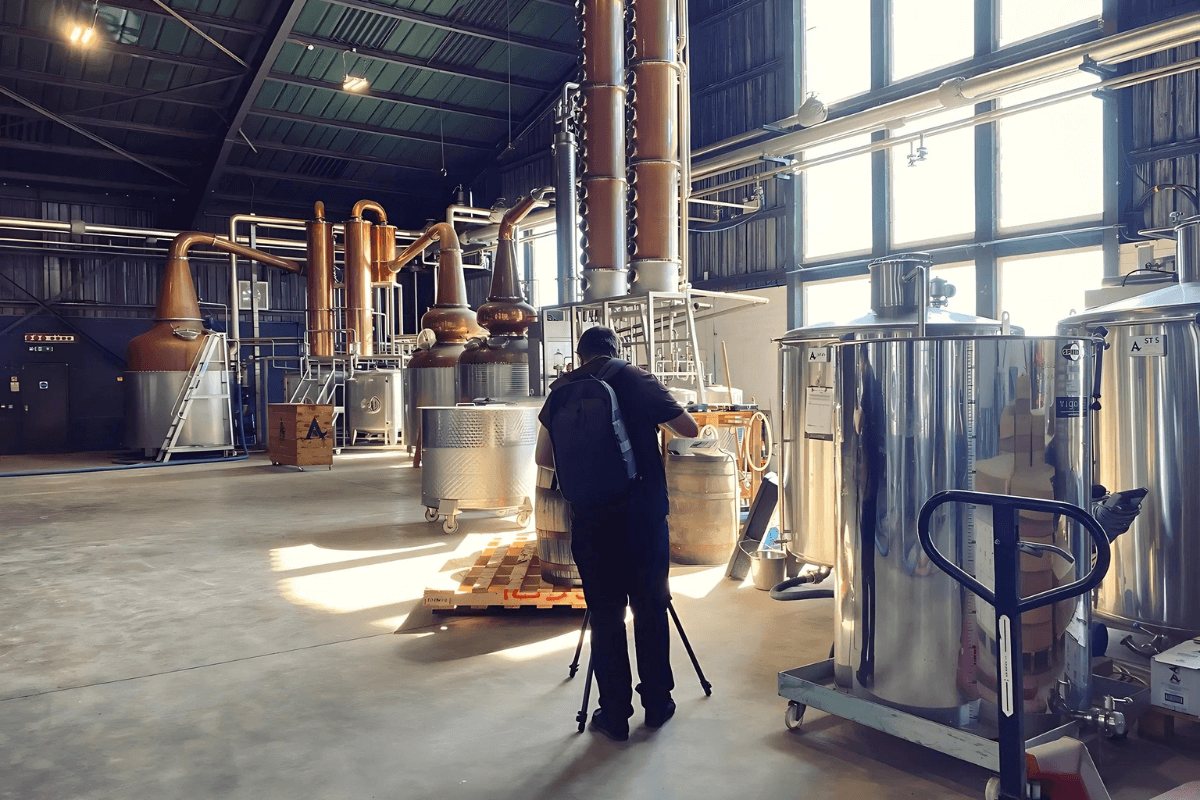
Image: Martin Reid behind the scenes at Arbikie Highland Distillery. Pic: ©The Gin Cooperative
After all your years working with Scottish Gin, do you have a personal favorite Scottish Gin or cocktail, and what makes it special to you?
It's a good question, and I can go through phases where I'll drink the same Scottish Gin and really try to understand its complexities and nuisances, and at other times, it depends on my mood. I am a big believer that there's a Scottish Gin out there for everyone, but sometimes it just takes the right time and place to discover it. So the answer is not at the moment. I'm in the fortunate position where I get to try and explore existing and new Scottish Gins throughout the year. I'm always happy as long as it's a Scottish gin that has been well-made by people who are passionate about the liquid in my glass.
In terms of cocktails, I love a classic Negroni. When made well with good quality ingredients, it delivers all the right elements: some bitterness and some slight sweet notes. It's just an all-around cocktail that delivers. I enjoy the Clover Club, Bramble, Gimlet, Corpse Reviver No. 2, French 75, and the occasional Martini. Every cocktail has a time for me, and I have to be in the right frame of mind to enjoy it fully.
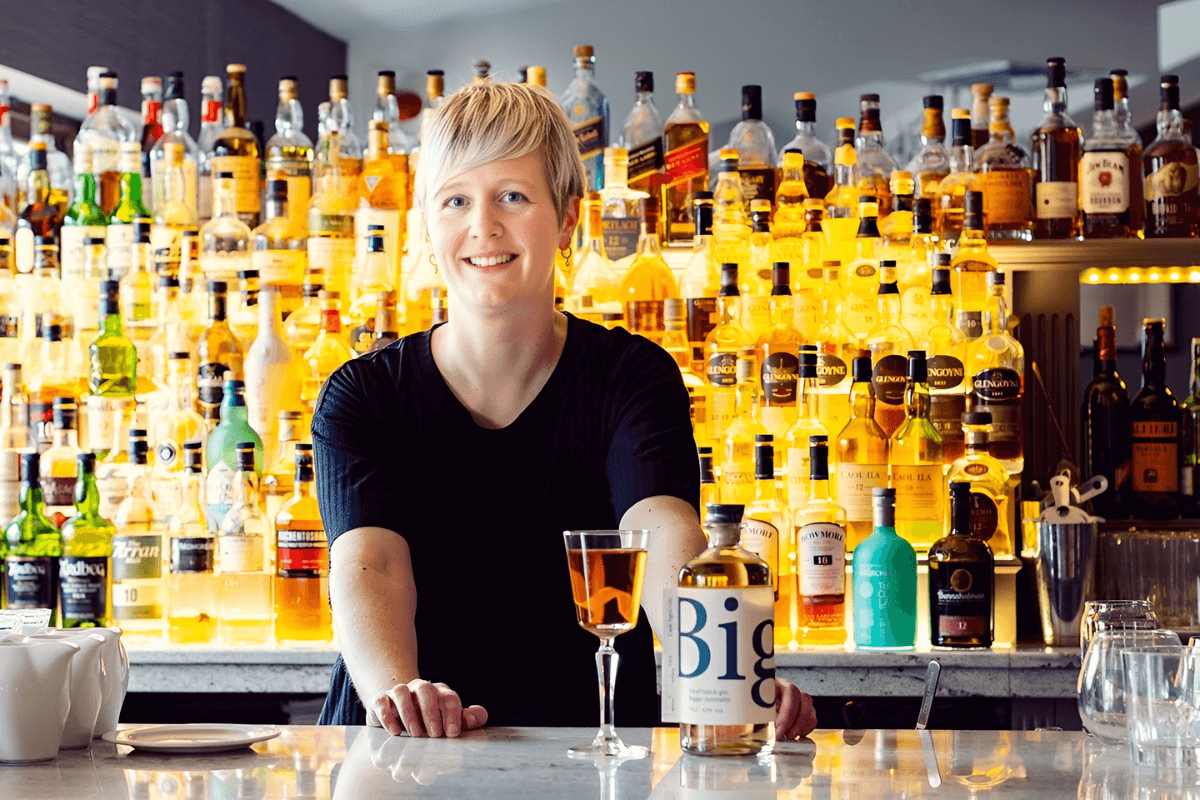
Image: The Gin Cooperative Co-Founder Natalie Reid preparing drinks for a photoshoot at Aberdeen’s Marcliffe Hotel & Spa. (Pic: ©The Gin Cooperative)
How do you see the Scottish Gin industry evolving over the next five years, and what role do you think The Gin Cooperative will play in that evolution?
We're already seeing brands consolidating their gin portfolios to focus on their key signature gin range. It makes sense as it's currently an over-saturated market. It's been part of Gin's overall growth and success that in spirit terms it can be quick to make, bottle, and get on the shelf. It's also been part of the over-saturation in businesses or people seeing the gin category as a way to make a quick buck, jumping on the gin bandwagon.
We're lucky in the world of Scottish Gin. The producers and brand owners understand that there is some well-founded expectation within the industry and from consumers that when someone releases a Scottish Gin, the expectation is that it will be of good quality. We don't expect every Scottish Gin released to be an award-winning gin, as it's entirely down to each person what they like and don't like in a gin. Still, the Scottish Gin category has avoided gimmicks or fads. I think that's a sign that most Scottish Gin brands and producers understand if Scottish Gin, as a term, represents premium products produced in Scotland with care and skill, then each Scottish Gin released has to live up to those values.
Considering that the Scottish Gin category has grown from 150 Scottish Gins and 70 brands when we launched our website in April 2018 to over 920 commercially released Scottish Gins and over 220 Scottish Gin brands by the end of 2023, there has been substantial growth. This growth level should demonstrate that we make good gins in Scotland.
What are your long-term goals for The Gin Cooperative as the landscape of the spirits industry continues to evolve?
The Gin Cooperative has continued to evolve alongside the Scottish Gin category. For example, as more gin distilleries introduced gin experiences or visitor experiences, we added a new Distilleries and Experiences section to our website. There are other areas of our website we're currently looking at expanding to ensure our visitors can find the latest Scottish Gin brands and learn more, explore, and discover the wonderful world of Scottish Gin.
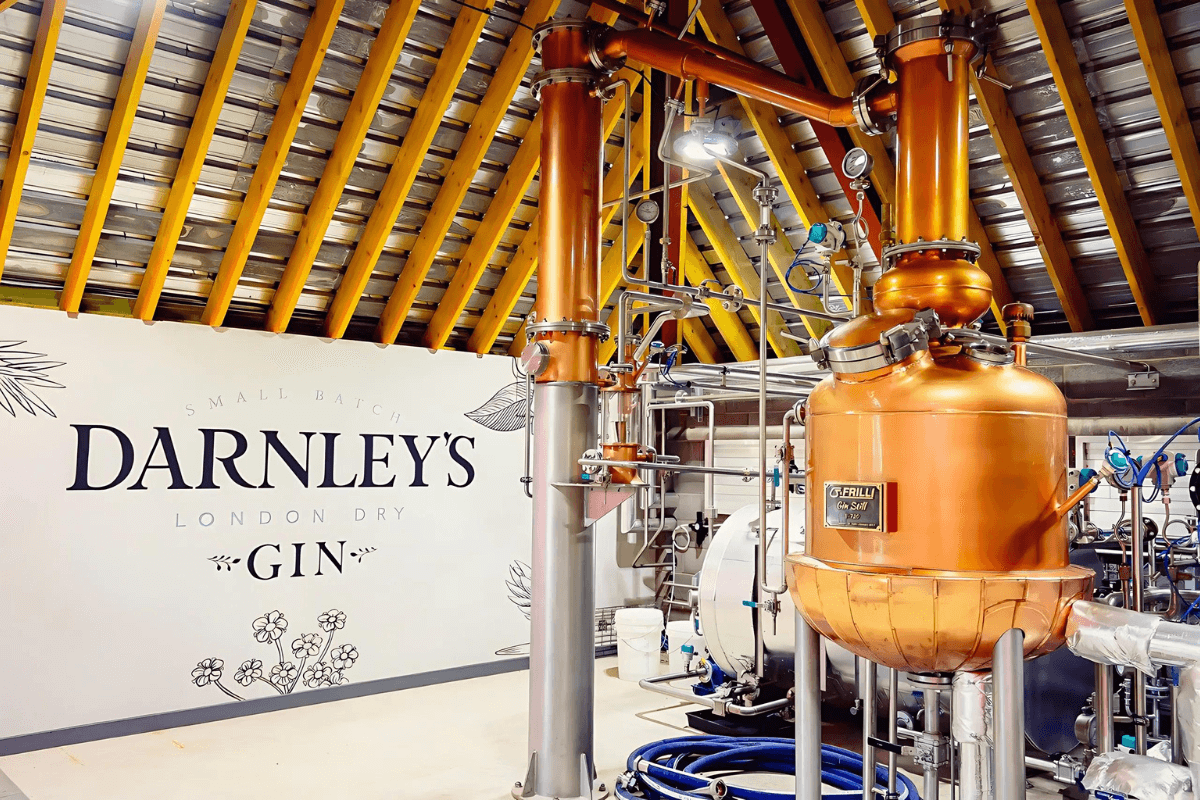
Image: Gin still at Darnley’s Gin Cottage. Pic: ©The Gin Cooperative
It's also key for me and Natalie, my business partner and wife, that everything we do continues to add value to the term Scottish Gin. If you're not passionate about what you do. If you don't care or don't get excited by your job, it's time to review your plans and look at doing something new that makes you happy.
When you are passionate about your business, late nights feel less like work. Whether working on an editorial feature, processing a batch of new distillery photos, or even working on this article late at night, doing something you love never feels like work.
Conclusion:
As The Gin Cooperative continues to champion the unique qualities and stories of Scottish gin, it is clear that its role in the industry is far from static. The landscape of Scottish gin may shift in the coming years, with brands consolidating, new players emerging, and the market maturing beyond its initial boom, but The Gin Cooperative remains a vital force in ensuring that the essence of Scottish gin is preserved and celebrated. By fostering deeper connections between producers, consumers, and industry professionals, Martin and Natalie Reid are not just promoting gin—they’re cultivating a rich, diverse culture of craftsmanship, tradition, and innovation that positions Scottish gin as a symbol of quality on the global stage. As the category evolves, The Gin Cooperative’s commitment to authenticity and collaboration ensures that it will play a pivotal role in shaping the future of this storied spirit, safeguarding its legacy while supporting its growth for years to come.
In conversation with Malvika Patel, Editor and VP, Beverage Trade Network
Also Read:
Clarity Gin Wins Gold and Best in Show at 2024 London Spirits Competition
Sur 34 Gin: A Sip of Uniqueness and Unexpected Mandarin
Top Gins You Must Add In Your Spirits Stores Or Restaurants





